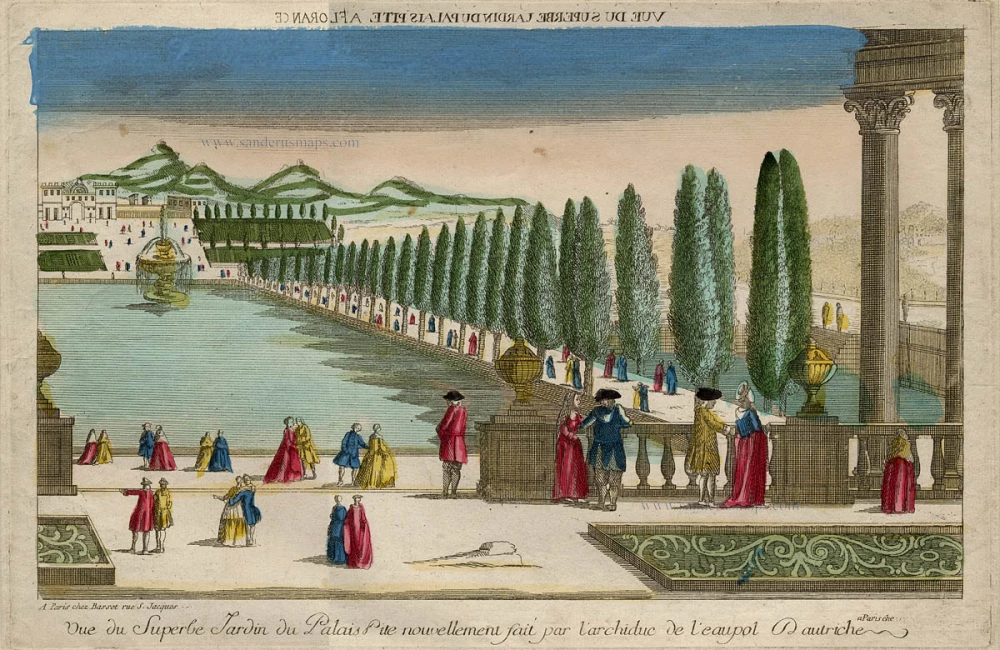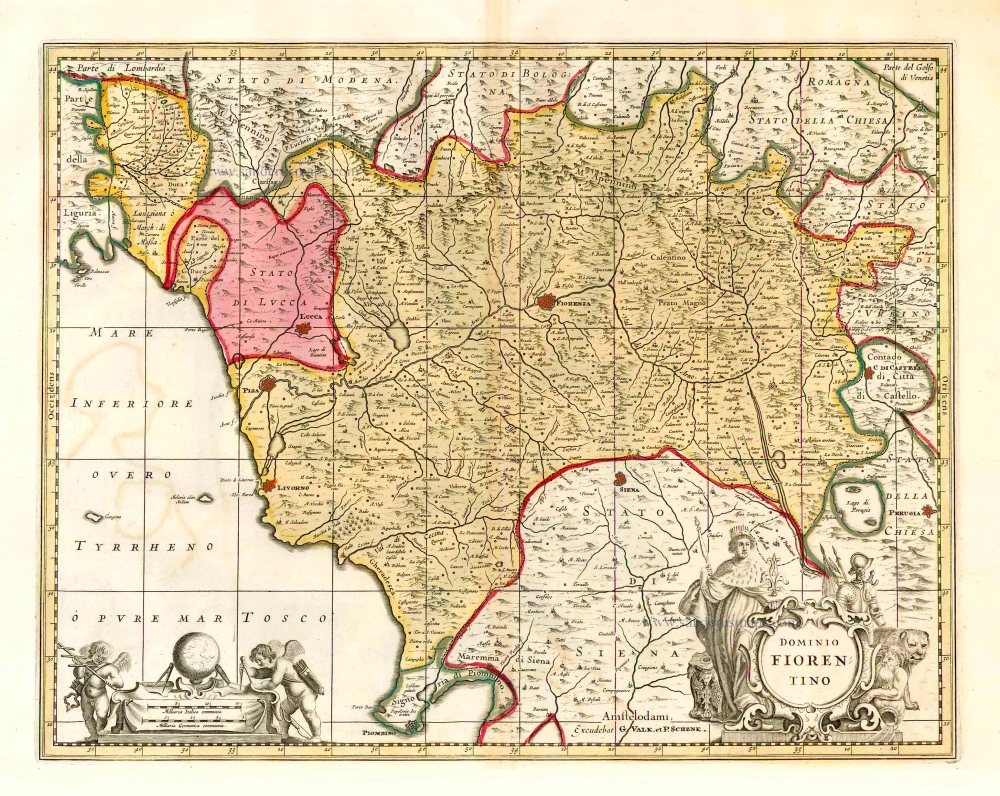Florence (Firenze) by Basset (Paris) Ca. 1780
Optical View (French: Vue d'optique)
An optical view is a type of 18th-century hand-coloured engraved print to be viewed through a special optical device. It depicts architectural, city, or landscape scenes and is designed to give a strong illusion of depth and perspective when seen through a magnifying lens or viewing box. Characteristic of an optical view is the reversed inscription: The titles or captions were often printed backwards, because the viewing device used a mirror that would flip the image right-side up again. The artists enhanced depth with bold converging lines and bright colours. The optical views were used for popular entertainment and education, a way for people to "travel" visually. They originated in France and England around the 1740s and became fashionable across Europe. They were often sold by travelling print sellers or displayed in fairs and parlours.
Basset was not just the name of a prominent family of Parisian print publishers, it was a dynasty. Active from the late 17th century into the 19th century, the name 'Basset' was a symbol of continuity and legacy, representing a lineage of print dealers and publishers who worked under that name across several generations.
The firm was especially active during the 18th century, specialising in optical prints, decorative and allegorical prints (such as prints with symbolic or metaphorical elements), religious, historical, and genre scenes, city views and exotic imagery.
Basset’s prints were not just part of the popular visual culture of the Enlightenment era, they were its backbone. Widely distributed and often sold at fairs, in print shops, or via itinerant vendors, their influence was felt far and wide.
Vue du Superbe Jardin du Palais Pite nouvellement fait par l'archiduc de L'eaupol D autriche
Item Number: 17512 Authenticity Guarantee
Category: Antique maps > Europe > Italy - Cities
Florence (Firenze) by Basset (Paris)
Title: Vue du Superbe Jardin du Palais Pite nouvellement fait par l'archiduc de L'eaupol D autriche
A Paris chez Basset rue S. Jacques.
At the top is a title in mirror writing.
Date: Ca. 1780.
Copper engraving, printed on paper.
Image size: 275 x 400mm (10¾ x 15¾ inches).
Sheet size: 330 x 480mm (13 x 19 inches).
Verso: Blank.
Condition: Original coloured, excellent.
Condition Rating: A+.
Separate publication.
Optical View (French: Vue d'optique)
An optical view is a type of 18th-century hand-coloured engraved print to be viewed through a special optical device. It depicts architectural, city, or landscape scenes and is designed to give a strong illusion of depth and perspective when seen through a magnifying lens or viewing box. Characteristic of an optical view is the reversed inscription: The titles or captions were often printed backwards, because the viewing device used a mirror that would flip the image right-side up again. The artists enhanced depth with bold converging lines and bright colours. The optical views were used for popular entertainment and education, a way for people to "travel" visually. They originated in France and England around the 1740s and became fashionable across Europe. They were often sold by travelling print sellers or displayed in fairs and parlours.
Basset was not just the name of a prominent family of Parisian print publishers, it was a dynasty. Active from the late 17th century into the 19th century, the name 'Basset' was a symbol of continuity and legacy, representing a lineage of print dealers and publishers who worked under that name across several generations.
The firm was especially active during the 18th century, specialising in optical prints, decorative and allegorical prints (such as prints with symbolic or metaphorical elements), religious, historical, and genre scenes, city views and exotic imagery.
Basset’s prints were not just part of the popular visual culture of the Enlightenment era, they were its backbone. Widely distributed and often sold at fairs, in print shops, or via itinerant vendors, their influence was felt far and wide.





